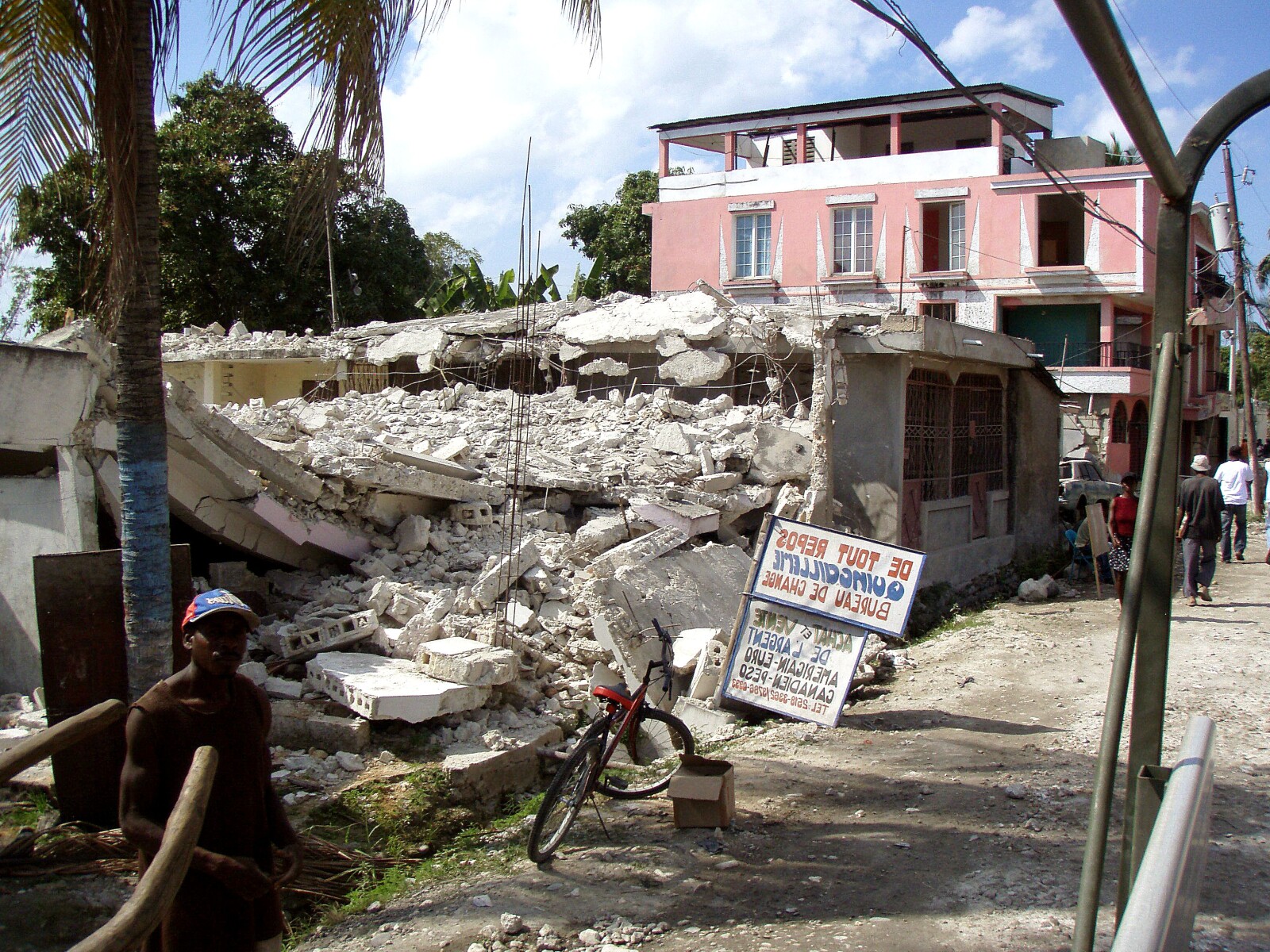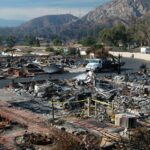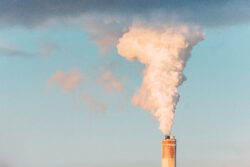The Basics of Environmental Property Damage Lawsuits
Air pollution has been a subject of increasing concern due to its adverse impacts on human health and the environment. Despite established environmental legislation, the escalating levels of air pollution, primarily attributed to industrialization, remain a daunting challenge.

This article delves into the intricate dynamics of air pollution class action claims, exploring the fundamental concepts of environmental law, the role of industrialization in air quality deterioration, and the process of identifying responsible parties. It further elucidates the legal process of filing a lawsuit, the eligibility criteria, and potential consequences for violating companies.
Case studies of successful lawsuits will also be considered to provide practical insights into the subject matter. Lastly, the article will probe into the future of environmental lawsuits, thereby shedding light on the evolving legal landscape.
This comprehensive exploration aims to enhance understanding of air pollution class action claims and their potential in safeguarding environmental health.
Key Takeaways
- Air pollution class action claims play a crucial role in holding polluters accountable for their actions and promoting corporate responsibility.
- Identifying responsible parties through scientific methods is essential for legal accountability and empowering affected communities.
- The eligibility criteria for filing a lawsuit ensure valid claims and prevent frivolous lawsuits, while legal representation is crucial in meeting these criteria and navigating the legal process.
- Successful air pollution lawsuits have resulted in compensation for affected communities, stricter regulations and enforcement measures, and the establishment of precedents for future lawsuits.
The Basics of Environmental Law
Environmental law, a multifaceted discipline, serves as the bedrock for addressing issues such as air pollution, striking a balance between society's need for a healthy environment and the demands of economic growth. This legal discipline is rooted in the evolution of environmental legislation, which has progressively aimed to mitigate the effects of pollution on natural resources, public health, and quality of life. This legislation has evolved over time, guided by scientific advancement in pollution monitoring techniques, and has adopted a more comprehensive approach to environmental protection.
Strategic deployment of pollution monitoring techniques has been instrumental in shaping environmental law. These techniques provide empirical data that quantify the severity of pollution, thereby informing the creation and amendment of legislation. For instance, the measurement of air pollutants such as particulate matter, nitrogen dioxide, and sulfur dioxide has led to stricter emission standards for industries and vehicles. Furthermore, these monitoring techniques have enabled the detection and attribution of pollution sources, reinforcing the accountability of polluters.
Environmental law also includes provisions for class action claims, enabling groups of individuals or communities adversely affected by air pollution to seek legal redress. Such collective suits prevent the dilution of individual claims when the harm is widespread, and ensure that corporations or entities causing significant pollution bear the responsibility for their actions.
Thus, understanding environmental law necessitates an appreciation of the dynamic nature of environmental legislation evolution, the role of advanced pollution monitoring techniques, and the importance of collective legal action in holding polluters accountable. Such understanding is crucial in effectively addressing the intricate problem of air pollution.
The Role of Industrialization in Air Quality Deterioration
Industrialization, with its rapid expansion and relentless pursuit of progress, plays a significant role in the degradation of air quality across the globe. The Industrialization Impact on atmospheric composition has been well-documented, with evidence suggesting that industrial activities contribute significantly to the release of pollutants. These pollutants, including particulates, nitrogen oxides, sulfur dioxide, and volatile organic compounds, are primary contributors to the decline in air quality and the subsequent health and environmental issues.
The World Health Organization (WHO) has developed Air Quality Metrics that serve as a standard for measuring the cleanliness of the air. These metrics include the concentration of pollutants such as particulate matter (PM), nitrogen dioxide (NO2), ozone (O3), and sulfur dioxide (SO2). These pollutants are predominantly released by industrial processes, revealing a clear correlation between industrialization and declining air quality.
In the context of class action claims, understanding the role of industrialization in air quality deterioration is crucial. Claimants often argue that industries have knowingly contributed to air pollution, causing harm to the health and well-being of communities. In such cases, Air Quality Metrics become a crucial tool in establishing the extent of pollution and the associated health risks.
The evidence linking industrialization to deteriorating air quality is indisputable. The Industrialization Impact on air pollution, as reflected in worsening Air Quality Metrics, underscores the need for stringent environmental regulations and sustainable industrial practices. The pursuit of progress and growth should not come at the expense of the environment or public health. It is imperative that a balanced approach is adopted, where development and environmental conservation coexist, ensuring a sustainable future for all.
Identifying Responsible Parties
In the quest to safeguard public health and the environment, pinpointing the entities culpable for the degradation of air quality becomes a critical step. This process, commonly known as polluter identification, involves a meticulous examination of pollution sources, including industries, transport systems, and even residential areas. It is a crucial element in the pursuit of legal accountability, setting the stage for potential class action claims to be lodged against those found responsible for the harmful emissions.
Polluter identification is not a straightforward process. It necessitates the use of scientific methods such as source apportionment studies and air quality modelling to trace pollutants back to their sources. The complexity of this task is further compounded by the interconnectedness of different pollution sources and the transboundary nature of air pollution. Therefore, it requires a holistic approach that takes into account the entirety of the pollution landscape.
Legal accountability, on the other hand, hinges on the successful identification of polluters. Once the polluters are identified and their contribution to the air pollution quantified, it becomes possible to hold them legally accountable for the damage caused to the environment and public health. This opens the avenue for class action claims where groups of affected individuals can collectively seek legal redress.
Thus, the process of identifying responsible parties is not only a fundamental step in addressing air pollution but also a potent tool in enforcing environmental justice. It empowers the affected communities to stand up against the polluters, fostering a culture of corporate responsibility and environmental stewardship. By holding the polluters accountable, it paves the way for a cleaner and healthier future.
The Process of Filing a Lawsuit
Initiating a legal proceeding against identified polluters necessitates a comprehensive understanding of the lawsuit filing process. This procedure requires the potential plaintiff to retain legal representation, which is crucial to navigating the complexities of the legal system. A lawyer or a law firm with experience in environmental law and class action suits can provide the necessary guidance and support throughout the legal process.
The initiation of a lawsuit begins with the filing of a complaint, a legal document that outlines the plaintiff's grievances and demands for relief. The complaint must detail the nature of the pollution, the harm suffered by the plaintiffs, and how the identified parties are responsible. The complaint is then served to the defendants, giving them the opportunity to respond. This instigates the discovery phase, where both parties gather evidence to support their claims or defenses.
Legal representation is also vital in settlement negotiation. Most class action suits are resolved through settlements, where the defendant agrees to pay a specified amount to the plaintiffs without admission of guilt. The negotiation process can be lengthy and requires skilled negotiation tactics to secure a fair settlement. The proposed settlement must then be approved by the court to ensure its fairness and adequacy to the plaintiffs.
The process of filing a lawsuit is complex and time-consuming, necessitating expert legal guidance. Understanding this process is essential for those seeking to hold polluters accountable and seeking redress for the harm caused by air pollution. The role of legal representation is paramount, aiding in the navigation of the legal system, negotiation of settlements, and ultimately, achieving justice.
Eligibility Criteria for Filing a Lawsuit
Eligibility to file a legal action against alleged pollutors is governed by specific criteria that must be met by the plaintiff, which include demonstrating a direct, personal injury linked to the environmental harm caused. This injury can be physical, such as respiratory ailments or other health conditions caused by poor air quality, or it can be property damage, for instance, the depreciation of property value due to proximity to a polluting facility.
The plaintiff must also establish causation, demonstrating that the defendant's actions directly resulted in the harm sustained. This can often be complex in air pollution cases, as multiple sources may contribute to the pollution. Thus, expert testimony may be required to establish a clear link between the defendant's actions and the plaintiff's injury.
In addition, the plaintiff has to establish that the defendant had a duty of care towards them, and that this duty was breached. For instance, industrial facilities have a responsibility to control their emissions and prevent undue harm to the surrounding environment and community. Breach of this duty would constitute negligence, which is a key element in many air pollution class action claims.
Legal representation options can play a crucial role in meeting these criteria, as experienced environmental lawyers have the expertise to navigate the complexities of such cases. They can guide plaintiffs in gathering sufficient evidence, selecting suitable experts, and making persuasive arguments.
In terms of compensation calculations, these are typically based on the extent of the harm suffered, including medical expenses, property damage, loss of income, and emotional distress. The aim is to restore the plaintiff to the position they would have been in had the harm not occurred, to the extent possible. This highlights the fundamental purpose of such claims, which is not just to punish the polluters, but also to mitigate the impact of their actions on the victims.
Gathering Evidence for a Case
Securing compelling evidence is a critical step in substantiating environmental litigation, as it forms the basis for demonstrating the link between the defendant's actions and the harm suffered by the plaintiff. In air pollution class action claims, evidence gathering revolves around three primary categories: scientific data, documentary evidence, and testimonial evidence.
Scientific data provides quantifiable proof of the pollution levels and their potential impact on the environment and human health. This might include air quality reports, medical records of affected individuals, and studies correlating specific pollutants with health issues. Expert testimonies often play a pivotal role in interpreting and validating such data, offering an authoritative voice that explains complex scientific findings to the court in an understandable manner.
Documentary evidence, on the other hand, helps establish the defendant's actions contributing to the pollution. This may comprise documents like internal memos, emails, reports, and records of operational practices that reveal negligence or willful misconduct. Evidence categorization enhances the clarity and credibility of the claim, facilitating a structured, persuasive argument.
Testimonial evidence from affected individuals or witnesses can further reinforce the plaintiff's case, providing first-hand accounts of the harm caused by the pollution. These testimonies can offer a potent, humanizing perspective, potentially swaying court opinion towards the plaintiff's side.
Expert testimonies, one of the most influential types of evidence, are invaluable in these cases. They can provide both technical analysis of the pollution and its effects, as well as professional opinions on the defendant's responsibility for it. In essence, these experts can bridge the gap between the technical complexities of air pollution and the legal requirements of proving liability.
Potential Consequences for Violating Companies
Companies found guilty of environmental transgressions, particularly those pertaining to air quality standards, can face significant repercussions that extend beyond mere financial penalties. These penalties are designed to enforce corporate accountability, ensuring companies adhere to established environmental standards.
Legal penalties for air pollution transgressions are typically severe. They may include substantial fines, the cost of which is often commensurate with the severity and duration of the violation. In cases where the violation has led to significant environmental degradation or harm to public health, the penalties can be amplified. Moreover, the legal repercussions can extend to company executives, who may face personal liability for their role in the transgressions.
Beyond the immediate legal penalties, companies may also face long-term consequences. For instance, a company's reputation can be significantly damaged by public disclosure of its environmental violations, leading to a loss of consumer trust and potentially a decrease in market share. Similarly, companies may face increased scrutiny from environmental regulators, leading to more rigorous and frequent inspections. They may also be compelled to invest heavily in remediation efforts to rectify the environmental damage caused by their actions.
Moreover, companies may find their future operations limited. Regulatory bodies may impose restrictions on their activities, or even revoke their operating licenses in extreme cases. These punitive measures serve to deter other corporations from engaging in similar transgressions, reinforcing the imperative for compliance with environmental regulations.
In light of these potential consequences, it is clear that companies have a significant incentive to comply with air quality standards, highlighting the crucial role of regulatory frameworks in promoting corporate accountability.
The Impact on Affected Communities
The ramifications of corporate environmental transgressions extend far beyond the confines of the penalized companies, profoundly impacting the health and wellbeing of surrounding communities. The detrimental effects of air pollution on human health are well-documented, with numerous studies indicating a correlation between exposure to polluted air and a heightened risk of developing respiratory diseases, cardiovascular conditions, and even certain types of cancer.
Community awareness about the health implications of air pollution plays a significant role in mitigating these risks. Increased knowledge about the harmful effects of pollutants can empower communities to take proactive steps towards reducing their exposure, advocating for cleaner air, and holding polluting companies accountable.
The socio-economic fabric of these communities often undergoes a transformation as well, particularly in cases where large-scale class-action lawsuits are filed. The financial restitution resulting from these legal actions can be channeled into community development initiatives, healthcare infrastructure, and environmental rehabilitation projects, thereby fostering resilience and sustainability.
Nevertheless, the psychological impact of air pollution on these communities should not be underestimated. Chronic exposure to polluted air can lead to stress, anxiety, and other mental health disorders, further exacerbating the health crises. Thus, a comprehensive approach to addressing the impact of air pollution on affected communities necessitates not only medical interventions but also psychological support services.
It is apparent that the repercussions of corporate environmental misconduct are multifaceted and far-reaching. The health, socio-economic, and psychological implications for affected communities underscore the urgent need for stringent environmental regulations, robust community awareness campaigns, and comprehensive support mechanisms.
Case Studies of Successful Lawsuits
Evaluation of certain legal victories against corporate environmental offenders offers insight into the power of collective litigation in holding these entities accountable for their actions. These lawsuits are essential in bridging the gap left by legal loopholes that allow corporations to dodge responsibility for environmental harm.
A notable example is the class action lawsuit against Pacific Gas and Electric (PG&E) in 1993. In this case, the residents of Hinkley, California, collectively sued PG&E for contaminating their groundwater with carcinogenic chemicals. The lawsuit, sparked by a single mother's investigation, revealed that PG&E had knowingly dumped the harmful chemical hexavalent chromium into the town's water supply for over 30 years. The case was settled in 1996 for $333 million, marking the largest settlement ever paid in a direct-action lawsuit in U.S history.
Another example is the class action suit against the petroleum industry in Durban, South Africa, in 2002. The community of South Durban, a predominantly low-income, black area, sued major oil companies for health problems related to air pollution. The case resulted in the oil companies being held accountable for their actions, thus setting a precedent for corporate accountability in environmental matters.
These cases highlight the potential of class action suits in challenging corporate environmental offenders and demanding justice for affected communities. They underline the necessity of collective efforts in overcoming legal loopholes and ensuring corporate accountability.
It is, therefore, crucial to support such legal initiatives that serve to protect the environment and the health of communities.
The Future of Environmental Lawsuits
Drawing from precedent-setting cases in the realm of air pollution class action claims, it is evident that this legal avenue holds immense potential for enforcing environmental accountability. As society navigates into an era marred by escalating environmental challenges, the scope and nature of environmental lawsuits are expected to undergo significant transformations.
Climate change litigation is anticipated to expand in the future, fueled in part by the growing body of scientific evidence linking human activities to global warming. It is increasingly becoming a powerful tool for holding governments and corporations accountable for their contributions to climate change. This litigation trend is expected to fortify the legal fight against air pollution, with claimants demanding not only compensation for damages but also corrective measures to mitigate future harm.
In parallel, the influence of eco activism is becoming increasingly pronounced in shaping the trajectory of environmental lawsuits. Activism-led movements, often armed with data and public support, are pressuring legislative bodies and judicial systems to prioritize environmental justice. Their efforts are not only raising public awareness but also catalyzing legislative changes and instigating landmark lawsuits. For instance, eco activists' campaigns against air pollution have already led to several successful class action claims, underscoring their instrumental role in driving environmental legal action.
The future of environmental lawsuits is, therefore, poised for significant evolution, driven by advancements in climate change litigation and the mounting influence of eco activism. These developments offer a promising avenue for reinforcing environmental protection and ensuring greater accountability for air pollution. The implications of this shift extend beyond legal borders, promising a more sustainable and just future.
Frequently Asked Questions
What types of health issues can be linked to air pollution exposure?
Exposure to pollution sources, such as industrial emissions or vehicle exhaust, can lead to a vast range of health problems.
Notably, the pollution effects can instigate respiratory conditions like asthma and bronchitis, cardiovascular diseases, strokes, lung cancer, and premature death.
Furthermore, research indicates a potential link between air pollution and neurodevelopmental disorders in children.
Thus, the detrimental effects of air pollution on human health are comprehensive and necessitate immediate attention and action.
How can individuals reduce their exposure to air pollution in their daily lives?
Reducing exposure to air pollution can be achieved through several methods.
Ensuring optimal indoor air quality by frequently changing HVAC filters, using air purifiers, and keeping windows closed on high pollution days can make a significant difference.
Additionally, the effectiveness of pollution masks should not be underestimated. Wearing masks, particularly in highly polluted areas, can significantly reduce inhalation of harmful pollutants.
Moreover, individuals should limit outdoor activity during peak pollution times to further minimize exposure.
Can an individual file a lawsuit against a company located in a different country for air pollution?
Initiating a lawsuit against a foreign company for air pollution introduces international litigation complexities. Cross border jurisdiction issues often arise, as the legal systems and environmental regulations can vary considerably between countries.
Therefore, while it is theoretically possible to file such a lawsuit, the practicality and success of such legal action would significantly depend on the specific circumstances, including the jurisdictions involved and the nature of the pollution.
How long does it typically take for an air pollution class action lawsuit to be resolved?
The duration for resolution of an air pollution class action lawsuit varies widely, influenced by factors such as lawsuit financing, legal complexities, and settlement negotiations.
While some cases may reach settlement within months, others can extend over several years. The intricacies of the case, including evidence gathering and establishing liability, contribute to the timeline.
Moreover, settlement negotiations, crucial to lawsuit resolution, can be prolonged due to the severity of environmental damage and the number of plaintiffs involved.
What are some common barriers individuals face when trying to file an air pollution class action lawsuit?
Individuals seeking to file an air pollution class action lawsuit often encounter several obstacles.
Legal representation challenges arise due to the complexity of environmental law and the high costs associated with pursuing such cases.
Proving causation difficulties are also common, as plaintiffs must establish a direct link between the pollution and the harm suffered, which often necessitates scientific expertise.
These barriers can deter potential claimants, hindering their pursuit of justice.
Conclusion
In conclusion, air pollution class action claims represent a critical legal recourse for communities affected by environmental degradation. They hold accountable the industries contributing to air quality deterioration, highlighting the need for sustainable industrial practices.
Successful cases demonstrate the potential for justice and restitution.
The progression of such lawsuits in the future will undoubtedly play a significant role in shaping environmental law and promoting responsibility towards the preservation of our environment.

This post has been generated by AI and was not reviewed by editors. This is Not legal advice. Please consult with an attorney.




